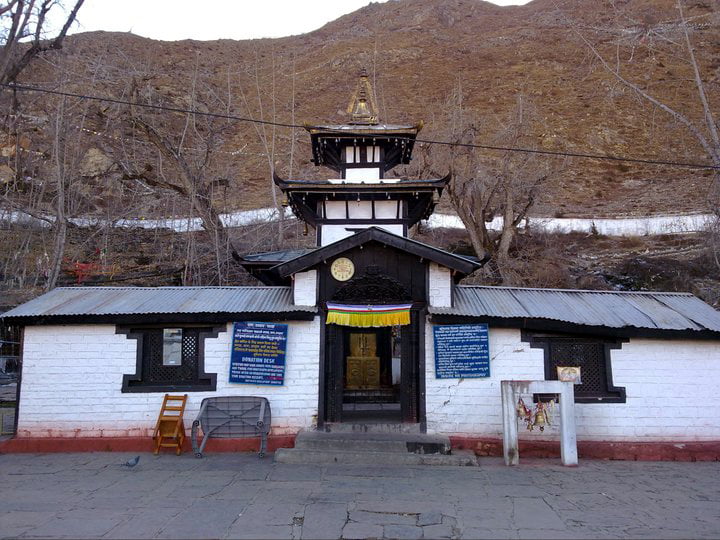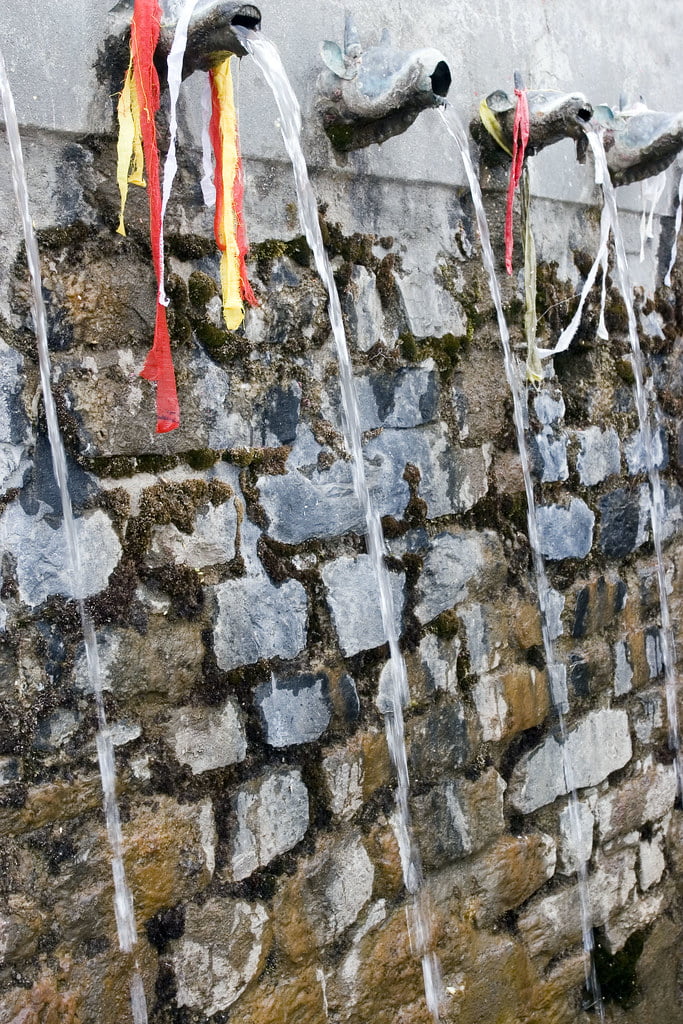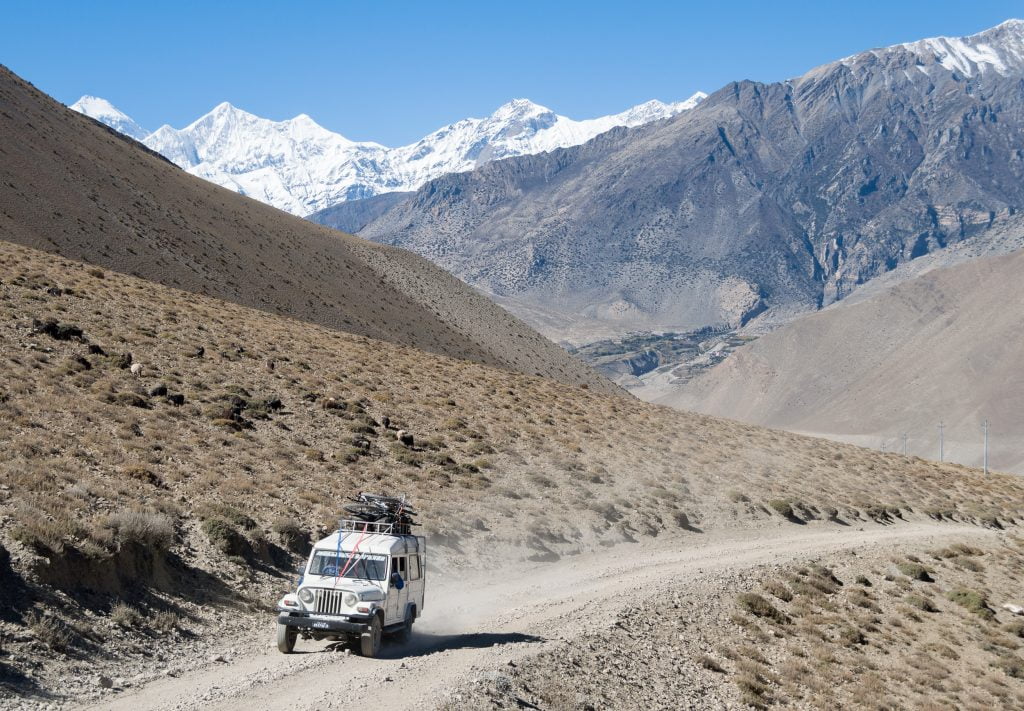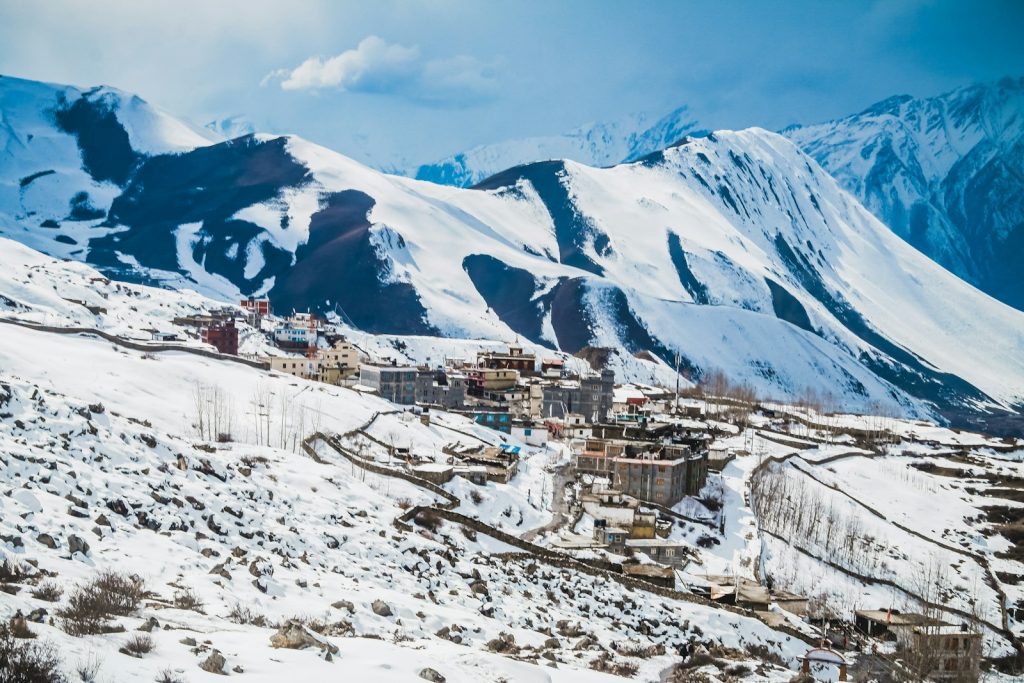Muktinath Temple: A Spiritual Journey to Enlightenment
Published: March 19, 2024
Last Modified: April 2, 2024
Welcome to the mystical world of Muktinath Temple, a spiritual haven nestled in the heart of the majestic Himalayas. This sacred site, located in the Mustang district of Nepal, is a spiritual destination revered by both Hindus and Buddhists. Unlock the mysteries of this enchanting temple as we embark on a spiritual journey to enlightenment.
Muktinath Temple, also known as “the place of liberation,” is believed to hold the key to attaining moksha, or liberation from the cycle of birth and death. Its ethereal beauty and serene surroundings make it an ideal retreat for those seeking solace and spiritual awakening.
As you explore the temple complex, you’ll be captivated by its unique blend of Hindu and Buddhist influences. From the stunning natural wonders surrounding the temple, including the 108 water spouts believed to cleanse your sins, to the sacred flame that never extinguishes, every aspect of Muktinath exudes a sense of divinity.
Whether you’re a religious pilgrim or a curious traveler in search of tranquility, Muktinath Temple offers an unparalleled spiritual experience that will leave you in awe. Join us as we unlock the mysteries of this ancient sanctuary and embark on a soul-stirring journey to self-discovery and enlightenment.
Significance and History of Muktinath Temple

Muktinath Temple, also known as “the place of liberation,” holds immense significance in both Hindu and Buddhist traditions. It is believed to be one of the 108 sacred Vishnu temples (Divya Desams) mentioned in ancient Hindu scriptures. According to Hindu mythology, Lord Vishnu, the preserver of the universe, appeared at this very spot to attain salvation from the curse of Brinda, a serpent deity. This event makes Muktinath an important pilgrimage site for Vaishnavites.
The temple complex is also revered by Buddhists as a sacred place where Guru Rinpoche, also known as Padmasambhava, meditated and attained enlightenment. This amalgamation of Hindu and Buddhist beliefs makes Muktinath a unique spiritual destination that attracts devotees and seekers from all walks of life.
Muktinath Temple has a rich history dating back to the 19th century. The temple was originally built in the pagoda style, but it was destroyed in a series of earthquakes. The current structure, rebuilt in the 20th century, showcases a mix of traditional Newari and Tibetan architectural styles. This historical significance adds to the allure of the temple and enhances its spiritual ambiance.
The Spiritual Journey to Muktinath Temple

Embarking on a spiritual journey to Muktinath Temple is an experience unlike any other. The journey begins with a sense of anticipation as you make your way through the rugged landscapes of the Mustang district. The surrounding mountains, with their snow-capped peaks and picturesque valleys, create a breathtaking backdrop for this transformative pilgrimage.
There are multiple routes to reach Muktinath Temple, each offering a different experience. The most popular route is the Jomsom Trek, which starts in the town of Jomsom and takes you through scenic trails, charming villages, and ancient monasteries. The trek itself is a spiritual experience, as you immerse yourself in the natural beauty of the Himalayas and connect with the spiritual energy of the region.
For those seeking a more comfortable journey, there are also options for road and air transportation. The road journey from Kathmandu to Muktinath takes you through the picturesque towns of Pokhara and Jomsom, allowing you to witness the diversity of Nepal’s landscapes. Alternatively, you can take a short flight from Pokhara to Jomsom and then continue the journey by road or foot.
Pilgrimage Routes and Transportation to Muktinath Temple

Muktinath Temple is accessible via various pilgrimage routes, each offering a unique experience for devotees and travelers alike. The most popular route is the Jomsom Trek, which starts from the town of Jomsom and takes you through the picturesque landscapes of the Kali Gandaki Valley. This trek is relatively easy and can be completed in about 4-5 days, depending on your pace.
Another popular route is the Kagbeni Trek, which begins in the medieval village of Kagbeni and follows the ancient trade route to Muktinath. This trek offers stunning views of the Nilgiri and Dhaulagiri mountain ranges and takes you through the arid landscapes of the Mustang region.
For those who prefer a more comfortable journey, road and air transportation options are available. The road journey from Kathmandu to Muktinath takes you through the scenic towns of Pokhara and Jomsom, allowing you to witness the beauty of Nepal’s landscapes. Alternatively, you can take a short flight from Pokhara to Jomsom and then continue the journey by road or foot.
Weather and the Best Time to Visit Muktinath Temple
The weather at Muktinath Temple varies throughout the year, with distinct seasons offering different experiences for visitors. The best time to visit is during the spring (March to May) and autumn (September to November) seasons, when the weather is mild and stable.
During spring, the surrounding landscapes come alive with vibrant colors as the rhododendron flowers bloom. The weather is pleasant, with clear skies and moderate temperatures, making it ideal for trekking and outdoor activities. Autumn is equally beautiful, with clear views of the mountains and comfortable temperatures.
The summer (June to August) and winter (December to February) seasons bring more extreme weather conditions to Muktinath. Summer is monsoon season, with heavy rainfall and occasional landslides in the region. Winter brings freezing temperatures and heavy snowfall, making trekking difficult and risky.
Rituals and Ceremonies at Muktinath Temple

Muktinath Temple is a place of spiritual significance where devotees engage in various rituals and ceremonies to seek blessings and attain spiritual liberation. The main shrine of the temple houses a sacred image of Lord Vishnu, adorned with traditional ornaments and garments. Devotees offer prayers, light incense, and make offerings of flowers and fruits to seek the grace of the deity.
One of the most unique rituals at Muktinath Temple is the ritual bath in the 108 water spouts. These spouts are believed to have been created by Lord Vishnu himself, and it is said that taking a bath in these spouts cleanses one’s sins and paves the way for spiritual liberation. Devotees immerse themselves in the icy, cold water, reciting prayers and mantras as a form of purification and surrender.
Another significant ritual is the lighting of the eternal flame at the temple. This flame, which has been burning continuously for centuries, symbolizes the eternal presence of divine energy. Devotees offer butter lamps and make wishes, believing that their prayers will be carried to the heavens by the sacred flame.
Exploring the Surrounding Areas of Muktinath Temple

- Jwala Mai Temple: Just south of the Muktinath temple lies Jwala Mai Temple, known for its eternal flame that is believed to be fueled by natural gas.
- Muktidhara: Comprising 108 water spouts, Muktidhara translates to “liberation springs.” Pilgrims undertake a ritual bath under these icy waters, believing it washes away sins and grants liberation.
- Thorong La Pass: If you’re feeling adventurous, consider the trek to Thorong La Pass, the highest mountain pass that can be crossed by vehicle. The panoramic views from the top are simply breathtaking.
- Jomsom: A beautiful town nestled by the Kali Gandaki River, Jomsom is a popular stopover for trekkers. You can enjoy scenic flights offering unparalleled views of the Annapurna range or visit the nearby Marpha village, famous for its apple orchards and local produce.
- Kagbeni: This charming village situated at the confluence of the Kali Gandaki and Mustang rivers is known for its unique Thakali culture and buckwheat delicacies.
Read More : pub crawl barcelona
Tips for a successful visit to Muktinath Temple
Short and sweet tips
- Permits: Get your ACAP and TIMS cards sorted.
- Weather: Autumn (Sept-Nov) is best, but winter works too (colder!). Avoid monsoons (June–August).
- Altitude: high (3,300m!); be aware of altitude sickness. Ascend slowly, if needed.
- Pack: layers, warm clothes, sturdy boots, and sun protection.
- Respect: Dress modestly and have quiet behavior in the temple.
- Offerings: Buy flowers, incense, or oil lamps from vendors.
- Jyotirlinga Darshan: Time your visit for an Aarti ceremony.
- Shoes Off: Remove footwear before entering the temple complex.
- Photos: Ask permission before photographing people praying.
- Guides/Porters: Consider hiring them for information, navigation, and help with luggage.
- Stay: Jomsom offers most accommodation options (and some near the temple).
- Food: There are limited options near Muktinath. Bring snacks or eat in Jomsom.
Muktinath Temple FAQs
How can I reach Muktinath Temple from my country?
The most common way to reach Muktinath Temple is by flying into Tribhuvan International Airport in Kathmandu, Nepal, and then taking a domestic flight to Pokhara. From Pokhara, travelers usually take a flight or drive to Jomsom, and then trek or take a jeep ride to Muktinath.
What is the best time to visit Muktinath Temple?
The best time to visit Muktinath Temple is during the spring (March to May) and autumn (September to November) seasons when the weather is pleasant and the skies are clear, offering stunning views of the Himalayas.
Is it safe to travel to Muktinath Temple?
Generally, traveling to Muktinath Temple is considered safe. However, it’s essential to be cautious and prepared for altitude-related challenges, weather changes, and rugged terrain, especially if trekking to the temple.
Do tour packages include permits and guides?
Yes, most tour packages include necessary permits for trekking or entering conservation areas, as well as the services of experienced guides who are familiar with the region and can provide valuable insights during the journey.
How high is Muktinath Temple?
Muktinath Temple sits at a high altitude of 3,300 meters (approximately 10,826 feet) above sea level. This means the climate is typical of high mountain regions.
Should I be worried about altitude sickness?
Altitude sickness is a possibility at such high altitudes. If you’re not acclimatized to high elevations, it’s wise to ascend gradually and be aware of the symptoms (headache, nausea, dizziness). Consider consulting a doctor beforehand if you have any concerns.
pokhara to muktinath distance ?
The distance between Pokhara and Muktinath depends on the route you take. The most common route, which goes via Jomsom, is about 185 kilometers
Muktinath Temple: A Journey of Transformation
Muktinath Temple transcends the realm of a simple pilgrimage site. Nestled amidst majestic Himalayan peaks, it beckons not just the devout but also adventure seekers and anyone yearning for a transformative experience.
The journey to Muktinath, whether battling the elements on the trek or braving the high altitude, is itself a test of resilience. Reaching the temple and witnessing its cultural and spiritual significance is deeply rewarding.
The temple complex, a harmonious blend of Hindu and Buddhist influences, fosters a sense of serenity and introspection. Participating in rituals like the holy bath at Muktidhara or witnessing the Jyotirlinga Darshan ceremony allows visitors to connect with something larger than themselves.
Muktinath’s power lies in its ability to captivate the senses; the breathtaking panoramas, the invigorating mountain air, and the vibrant culture all combine to leave a lasting impression. It’s a place to reconnect with nature, delve into spiritual traditions, and discover pockets of peace within oneself.
So, if you seek a journey that pushes your limits and awakens your spirit, Muktinath Temple awaits.
Read More : Gimkit